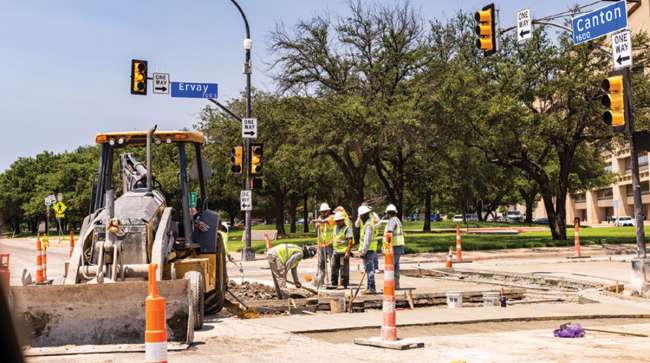Senior Reporter
Report Says DOT ‘Management Challenges’ Include Reducing Highway Fatalities

[Stay on top of transportation news: Get TTNews in your inbox.]
A new Department of Transportation inspector general report concluded that DOT’s key 2023 “management challenges” range from reducing highway fatalities to successfully implementing the variety of Infrastructure Investment and Jobs Act programs.
“A rise in fatalities on our nation’s roads in recent years calls for effective implementation of safety programs created or augmented through IIJA funding, whether focused on roadways alone or on the interaction of transportation modes, such as railroad crossings,” the report said. “At the same time, DOT will need to improve its oversight of surface transportation safety programs.”
In all, the top management challenges highlighted in the Nov. 2 report include all of DOT’s subagencies that will need to continue to focus on driving “significant progress and change in 10 challenge areas.”
The inspector general said that auditors considered several criteria in identifying DOT’s top management challenges for fiscal 2023, “including their impact on safety, documented vulnerabilities, large-dollar implications and the ability of the department to effect change.”
ICYMI: DOT OIG considers several criteria to identify the Department’s top management challenges for FY 2023, including safety impact, documented vulnerabilities, large dollar implications, and its ability to effect change – Learn more https://t.co/xKX0U2DkJk — U.S. DOT OIG (@DOTInspectorGen) November 7, 2022
DOT’s major surface safety challenge is reducing highway fatalities and injuries, according to the report.
“Along with continued root cause analysis, robust oversight of motor carrier safety performance and state compliance with federal requirements is crucial to combating the estimated 10.6 % increase in fatalities involving large trucks and buses since 2020,” the IG report said. “Our recent audits have identified challenges in improving the quality and transparency of motor carrier safety data, safety measures and carrier safety ranking assessments; commercial driver medical certification oversight; and commercial driver license disqualification requirements.”
DOT’s comprehensive approach to addressing the challenge is outlined in its National Roadway Safety Strategy, released in January.
“In particular, DOT’s success will require identifying the root causes of the increased fatalities,” the IG said. “This effort will require sustained research, data analysis and careful coordination between the department and its operating agencies, state and local governments, industry and other stakeholders — as well as efficient stewardship of over $34 billion in IIJA program and grant funding aimed at improving transportation safety.”
Want more news? Listen to today's daily briefing above or go here for more info
The management challenges report is required annually by law and helps the department focus attention on effectively managing its programs and operations while advancing its strategic goals.
“These goals include improving safety, supporting economic strength and global competitiveness, promoting equity and sustainability, fostering transformation and strengthening organizational excellence,” the report said.
Some of the key challenges included:
- Managing challenges in addressing the underlying root causes of recurring security weaknesses, due in part to the inconsistent enforcement of an enterprisewide information security program, in which the IG said it has identified nearly 10,000 open security weaknesses.
- Managing risks to achieve goals; enhancing award, administration and oversight processes over new and existing funded programs and projects.
- Executing federal priorities related to the impact of climate change, advancing equity, and promoting resilience in infrastructure.
- Coordinating effectively to address DOT and stakeholder capacity challenges to successfully deliver Infrastructure Investment and Jobs Act programs.
- Maximizing the benefits of workforce flexibilities and the hybrid work environment to enhance efficiency, effectiveness and engagement.
Alongside DOT’s long-standing safety and policy responsibilities, the department is now embarking on a significant effort to improve the nation’s infrastructure through the IIJA, which authorizes $660 billion in transportation funding through fiscal 2026.
“As the department is aware, the volume of IIJA funds, coupled with the creation of new programs and priorities, presents significant implementation and oversight challenges,” the IG report said. “Simultaneously, DOT faces a shifting macroeconomic landscape with regard to inflation, labor and supply chain issues.”




